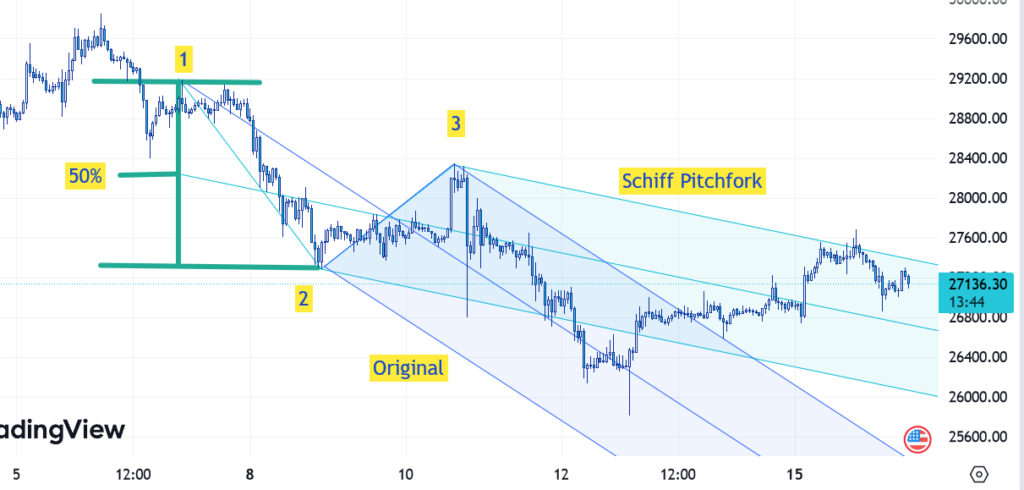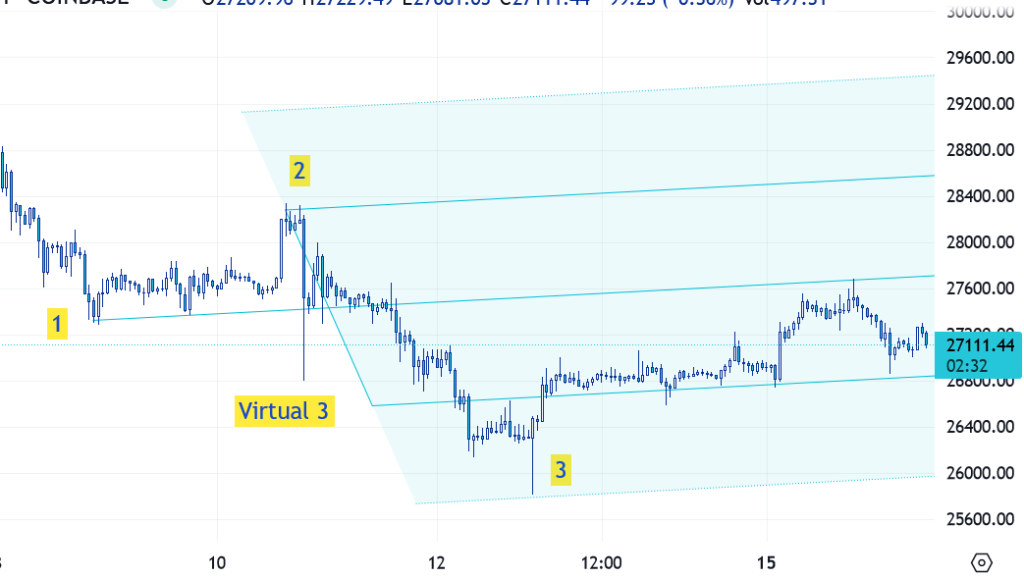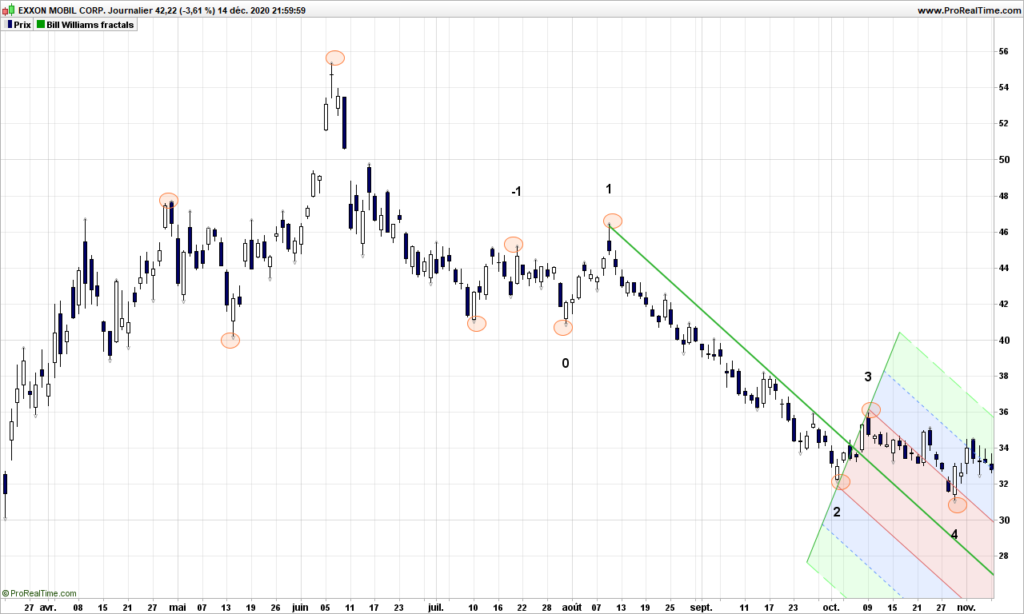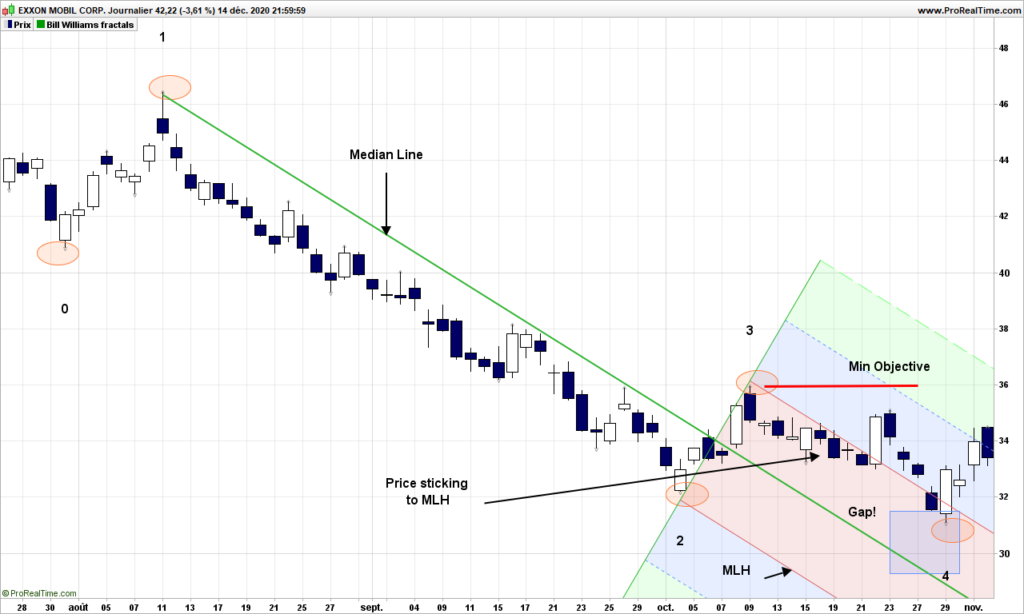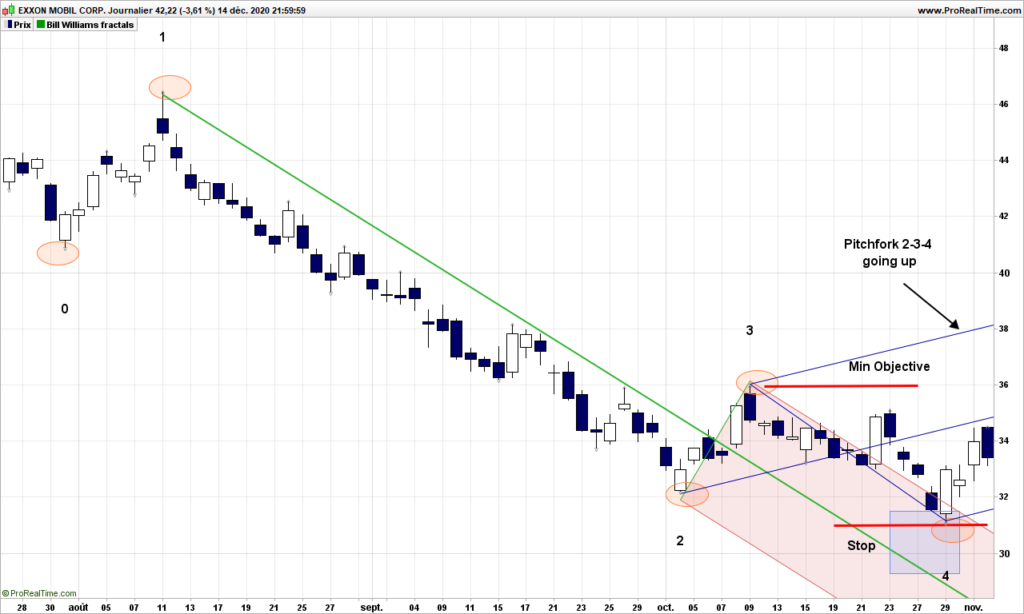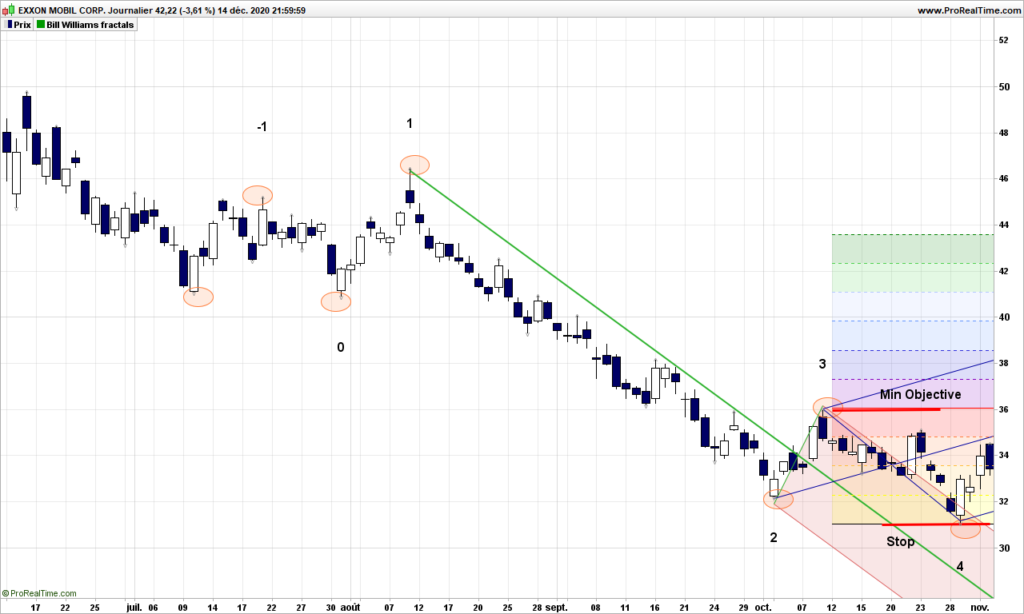Andrew Pitchforks are not just a ‘channel’ type, they are a very accurate trading and market anticipation technique with no equivalent. I will focus today on the basic usage, laying out a basic pitchfork on a chart, getting a buy or short signal, getting confirmation, placing stops and estimating some target areas. Big agenda, isn’t it?
Let’s start immediately. Open a chart and select the last 4 peaks and troughs that must alternate. If you are not sure, you can use fractals or oscillators that go above and below zero, even average. Your eyes are also a good indicator :-))) Don’t worry about having the ‘right’ pivot points, each set of pivot have a story to say and Dr Andrew never put rules to select these points. We will see in other posts how to validate a pitchfork, that is more advanced discussion.
As a beginner pitchfork trader, make sure you the 4 pivots you selected form a wedge, like this:
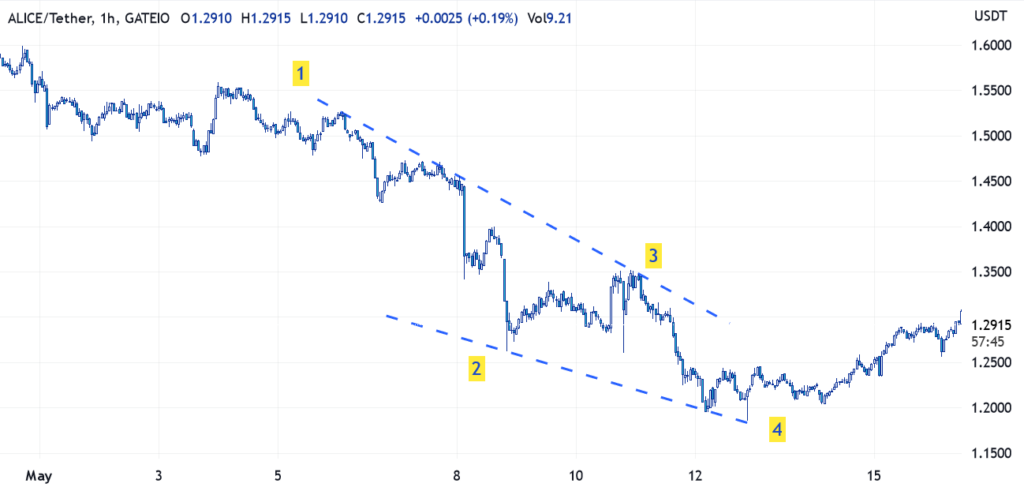
Note the numbering. Last pivot is always called for 4.
Now we can draw our first pitchfork by selecting pivots 1, 2 and 3:

Pitchfork is made median line, 2 median lines high (MLH) parallel to median lines. Line 1-3 is called Hagopian line. Note that both median and Hagopian line are slopping down.
Buy Signal. The basic buy signal is when prices (a full candle) exit the pitchfork. Easy!
Confirmation After exiting the pitchfork, prices usually retest the MLH, which can also be a good entry point.
More secured entry An other possible entry is after breaking the Hagopian line. Note that it can be retested as well before price actually start going up.
Stop Loss – Assume pivot 4 as a good level for stop loss for now
Target Price Case 1. When price don’t reach the median line like in our case, it is expected that prices will go back to pivot 3 level with 80% confidence, and possibly much higher.
Target Prices Case 2. We draw parallel lines to median line. Like this:
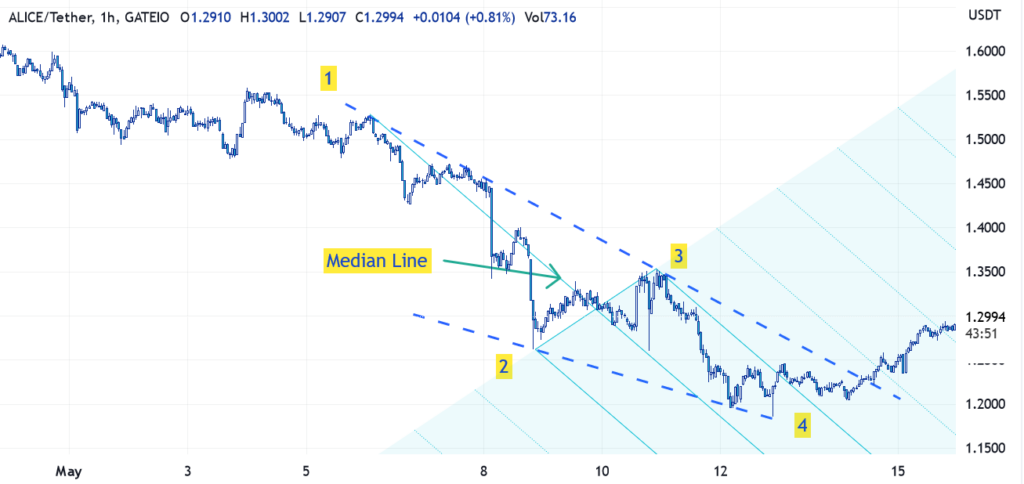
Then we draw a new pitchfork by selecting pivots 2, 3 and 4.
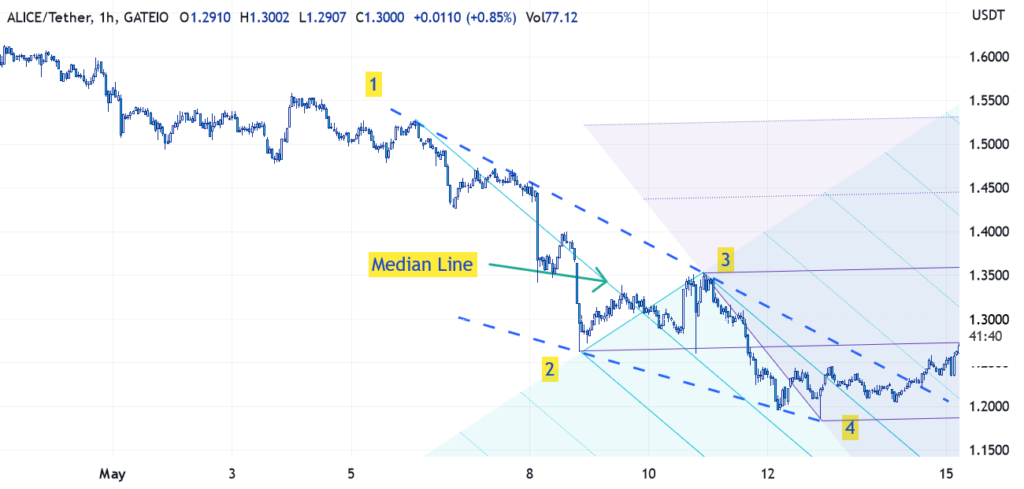
That is the trick now! Assuming both pitchfork are valid (more in future post), the intersections of MLH, medians and warning lines are potential target prices, defined with also a timing!!! You can say price should reach this price by this time wiht pretty good accuracy.
Let’s look into the future:
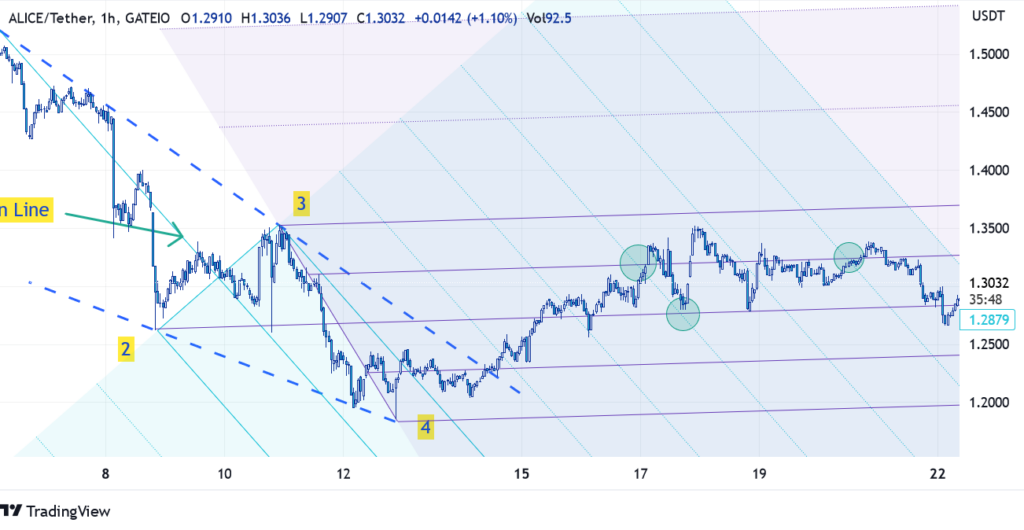
As you can see, price went up though it did not reach pivot level (80% probability only!). I went beyond the median anyway. Because pivot 4 was not a the median (remember the hybrid pitchfork?), intersections are not accurate here.
That is the basic story. Hope you noted the assumptions. We have to study what to do when pivots do not form a wedge, how to validate a pitchfork, etc, etc…
In the meantime, please trade safely.



